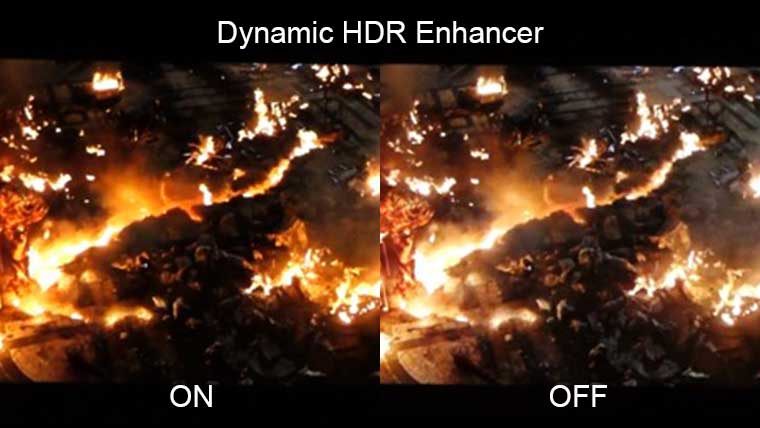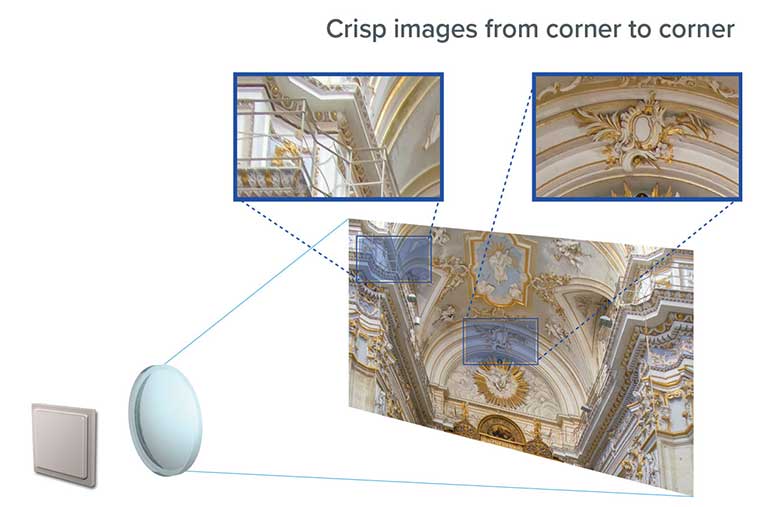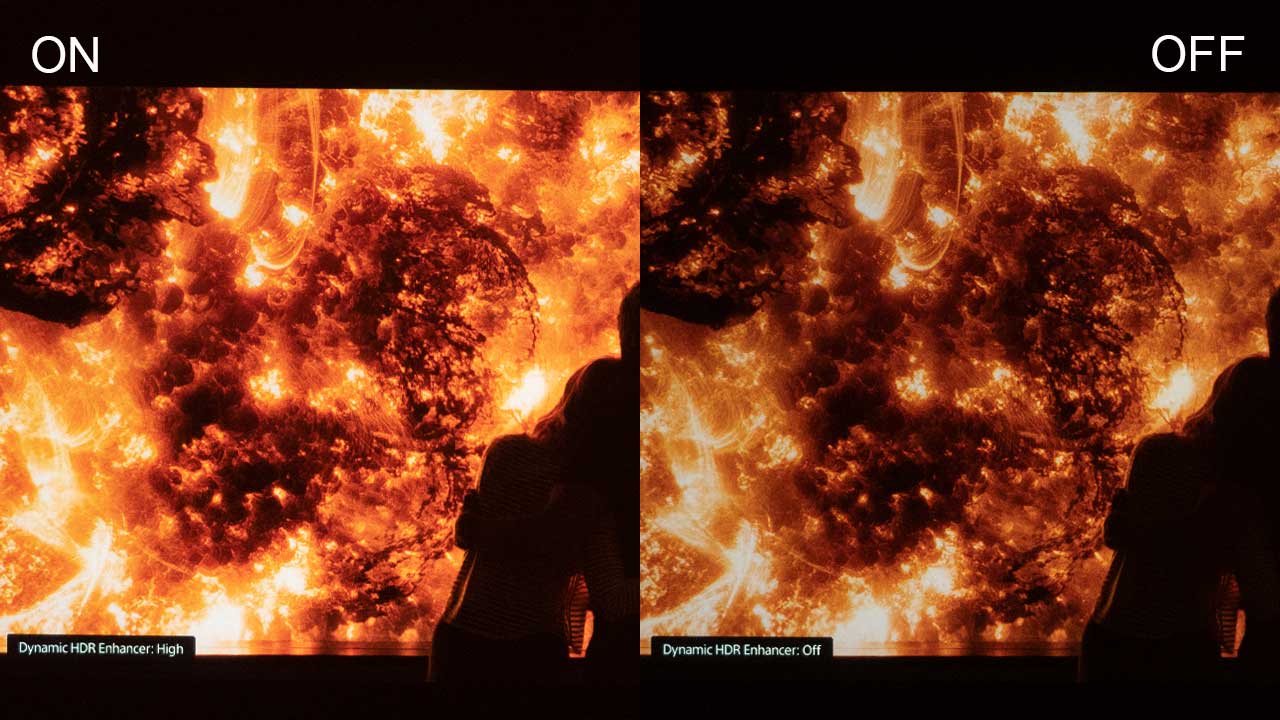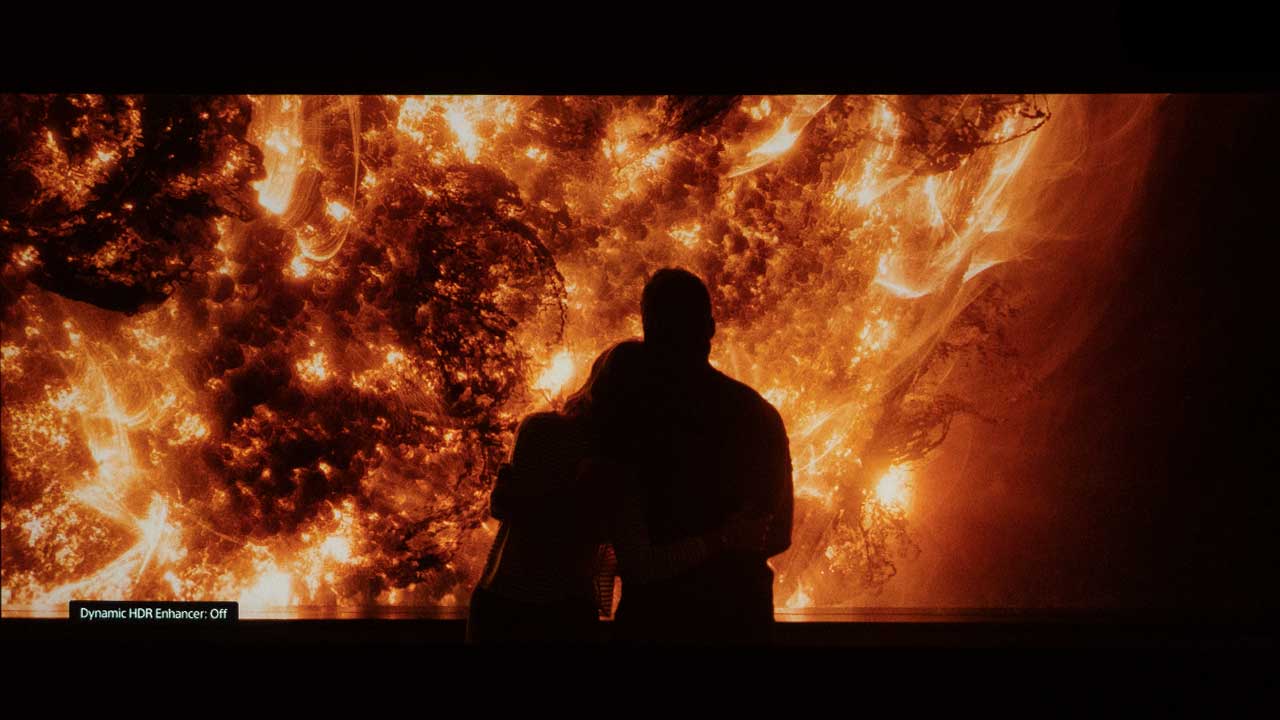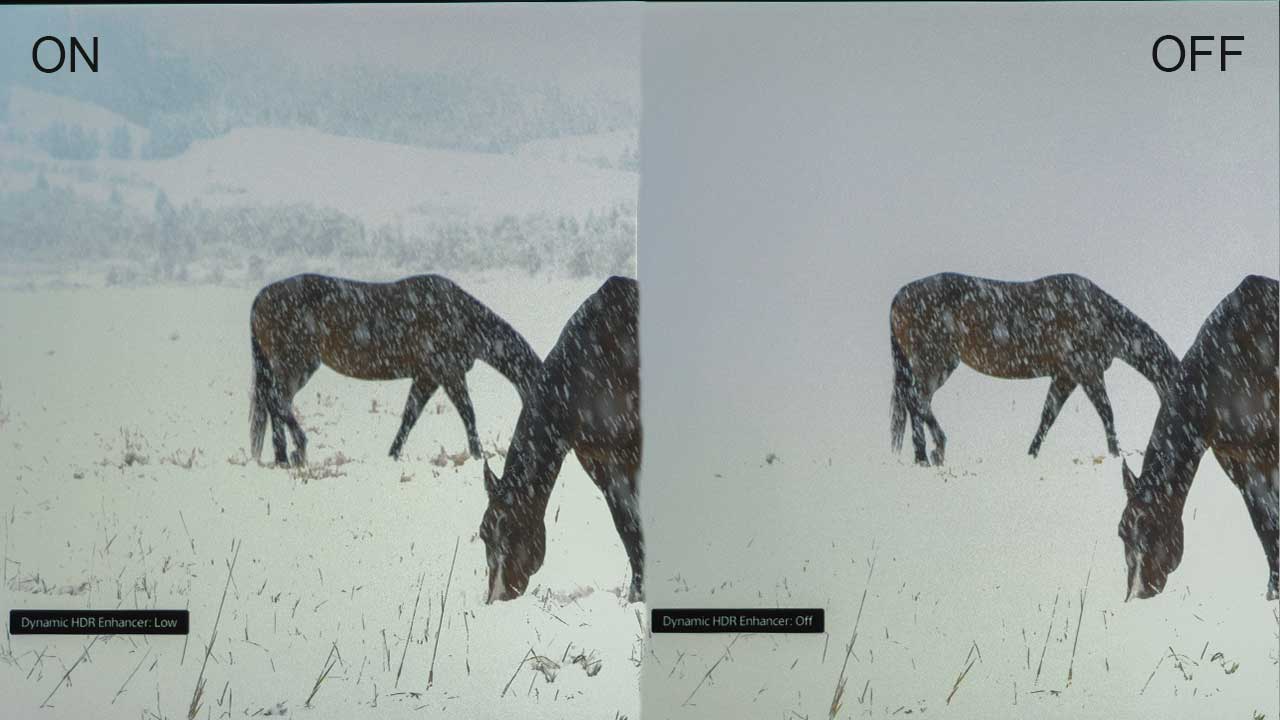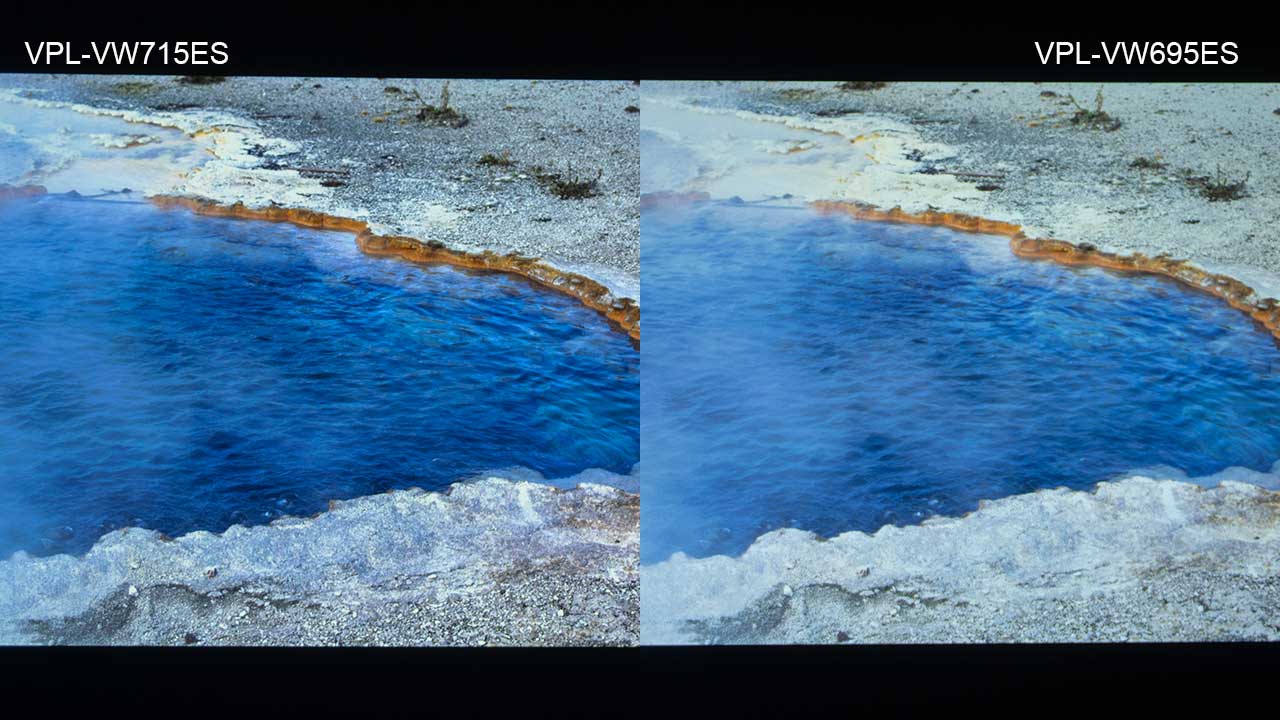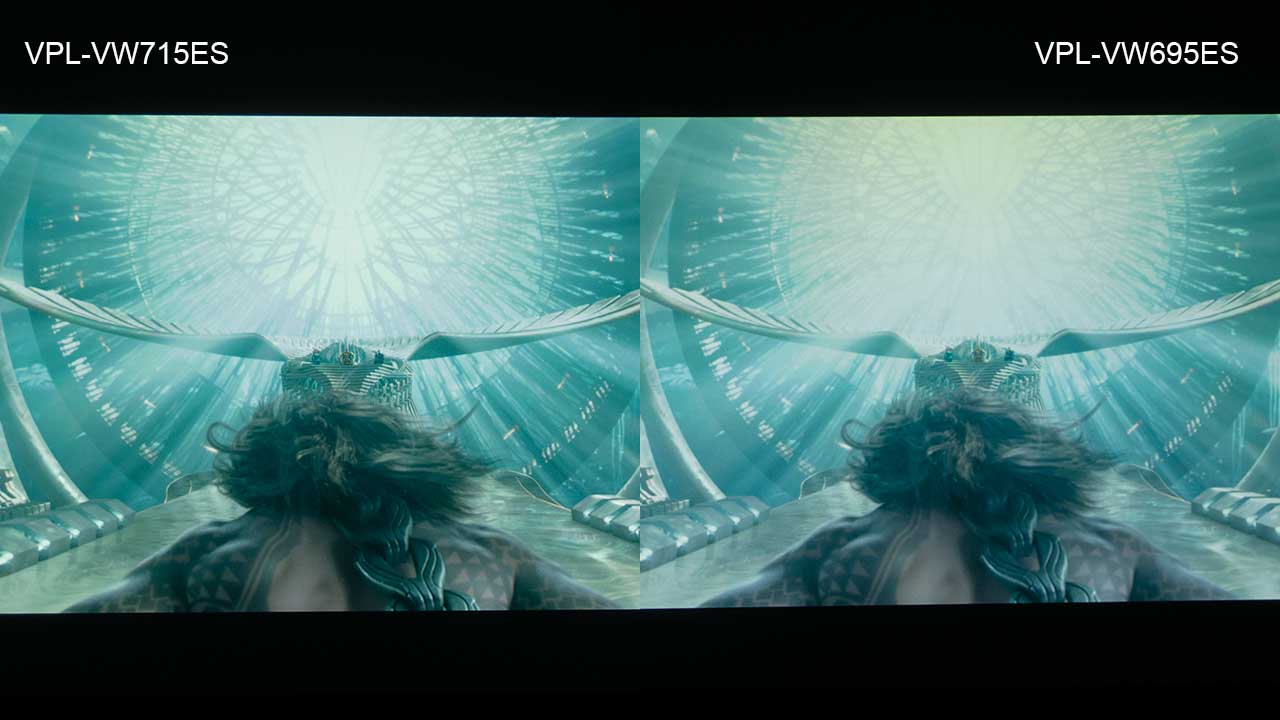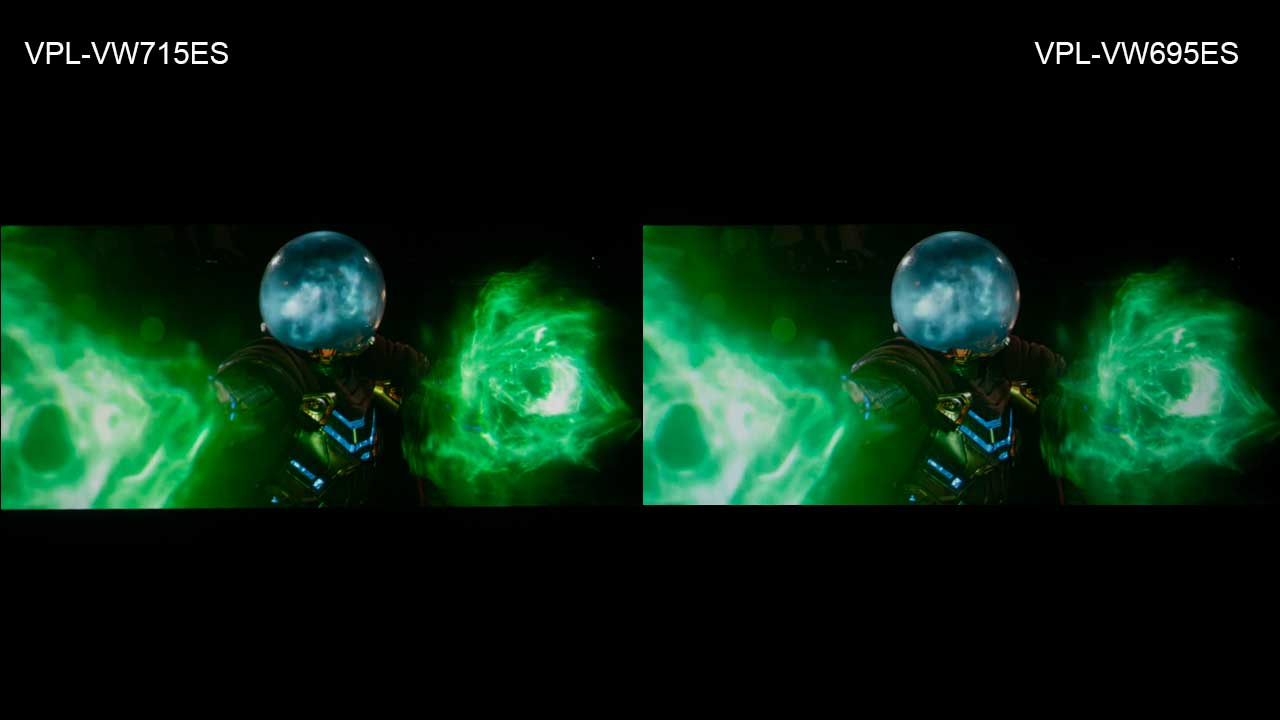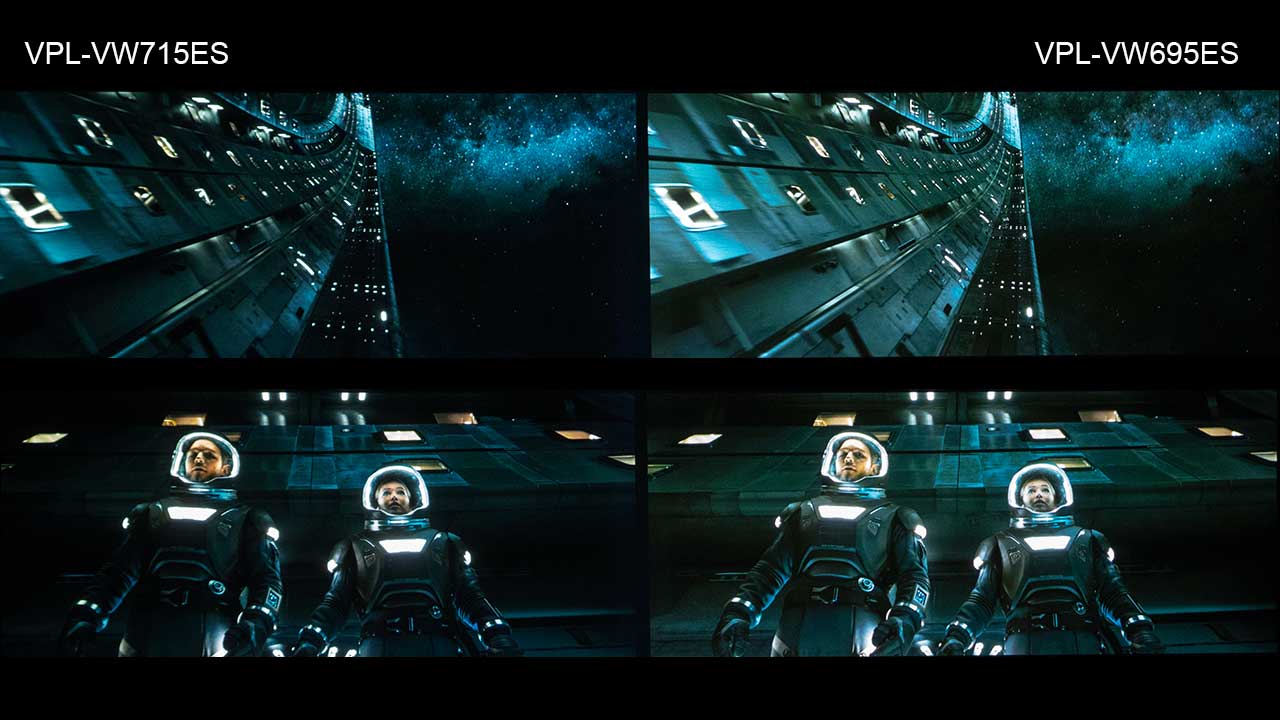Sony has a habit of hiding major improvements under obscure names. The VW715ES, along with the VW915ES and GTZ380, all have a new feature called HDR Contrast Enhancer. By utilizing a version of Sony’s X1 processor optimized for projection, the VW715ES is one of the first Sony projectors that can analyze HDR content scene by scene for precise dynamic tone mapping of HDR10 content.
HDR consumer content (4K Blu-ray and streaming) is mastered for playback on a very bright flat panel, not a dimmer projector. Most 4K HDR capable projectors can only deliver between 100 nits (29 fL) and 200 nits (58 fL). This means no HDR compatible home theater projector can reproduce all the brightness (1000+ nits) found in consumer HDR content.
As a result, HDR projectors utilize tone mapping, which compromises maintaining bright highlight details and delivering full screen brightness. When the HDR info frame is detected, most HDR projectors switch to HDR mode with a fixed tone map. It is basically one size fits all, which hurts HDR performance.
Last year companies like JVC began introducing projectors with auto tone mapping, which automatically adjusts the projector’s HDR settings (tone mapping curves) to try to optimize HDR10 image quality. The goal was to optimize the projector’s brightness capabilities based on the HDR content being shown.
Since the metadata is static or often missing/incorrect, the projector's tone mapping decisions at various points in a movie can sometimes be off. This can result in a dim or dull-looking HDR image.
For more precise tone mapping, the TV or projector needs the ability to measure the HDR content frame-by-frame to generate accurate metadata. JVC was one of the first projector companies to add dynamic measurement and tone mapping to the home theater projectors like their NX5, NX7, and NX9. This year, Sony is also introducing that capability.
Whereas dynamic HDR analysis and tone mapping is a new concept for most projector manufacturers, Sony benefits from years of experience since this capability has been available in some Sony 4K TVs since 2017 thanks to the X1 processor.
Below are a few screenshots comparing the new VW715ES against the previous VW695ES, which were shot side by side on the same screen. While improvement is far more noticeable in person, they should give you an idea of the difference.


